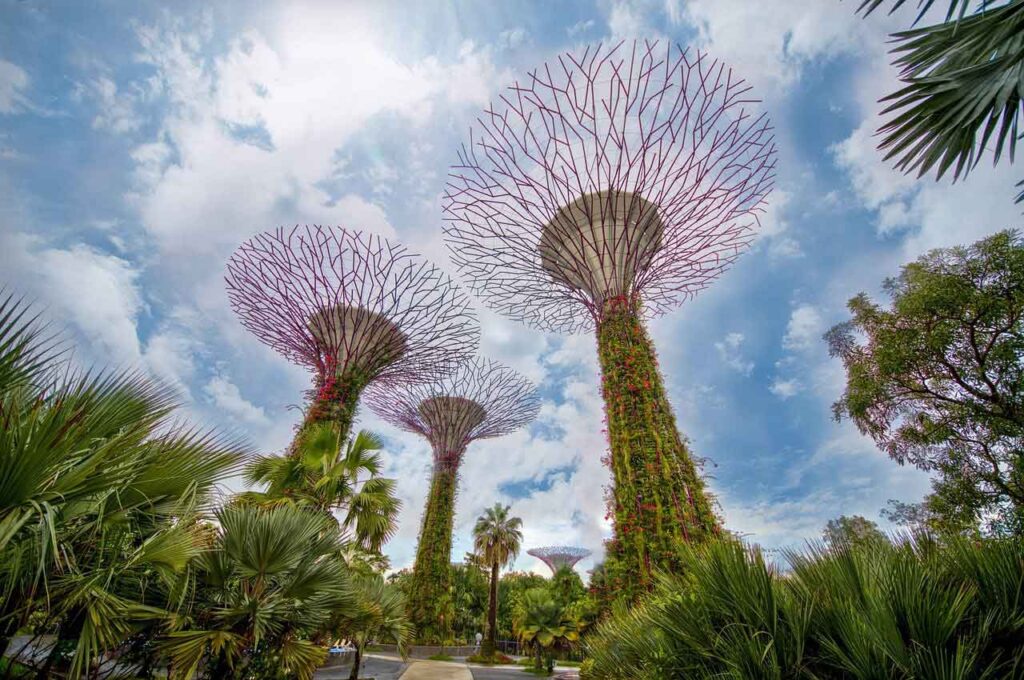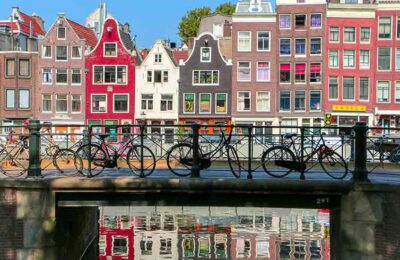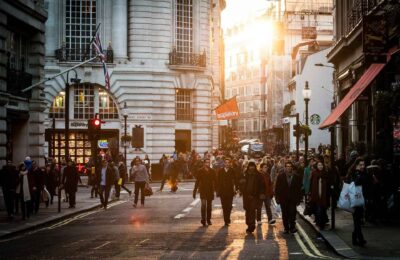Singapore is one of the top cities in the Green City Index, prioritizing sustainability in integrated planning, high-density development and conservation of green areas after acquiring independence in 1965.
Singapore is often called the ‘garden city’ due to its large presence of parks and green spaces.
Plants are on the building’s facade, interiors, rooftop and as well as on the exterior of the building. The city-state contains large areas of tropical natural reserves and botanical garden and strives to become the greenest city in the world.
Eco-conscious measures and initiatives made Singapore one of the main global centres for large multinational corporations and a place for investors around the world.

Park Royal Hotel, a platinum rated green building in Singapore appreciated for its water saving design
Here are five reasons which transformed Singapore into one of the greenest cities in the world.
1) Lessons from the past
The country was not always clean and green in the 1960s. Singapore was a developing country with muddy rivers, polluted canals and an uncontrollable flow of wastewater. Slums enclosed many parts of the city and unemployment was growing.
Singapore wanted to grow to become a better city. The first and leading Prime Minister Lee Kuan formulated plans to change Singapore into a tropical garden city by widely supporting greening. This involved cleaning up the city’s open sewers, water bodies while preserving the environment.
Lee Kuan’s concept of a green and clean Singapore helped guide a set of regulations for many years from creating a sense of public awareness about cleanliness to implementing huge cleaning projects that have helped the creation of a rich urban landscape.
Moreover, Singapore is a small island that lacked natural resources. The central government carried out a planning and management approach to use the resources efficiently.
Singapore learnt from its past and created ecological conscious students to continue the efforts taken by the city to make it a liveable place. The city’s generation became aware of how making the city a better place to live would attract people who want to invest.
2) Green governance
Singapore’s centralized government system prioritized the physical and mental well-being of its residents and the future. Having biodiversity is considered a mandatory feature for the city instead of including it only as an aesthetic element in the urban environment.
For about three decades, the government efficiently cleaned areas that were polluted and established agencies such as the National Parks Board, which enabled greenery in every part of the city where one can see. The vision of greening the city influenced urban planning, incentive policies, zoning, and public awareness movements. Moreover, the government encourages all its citizens to help to make their city clean and green.
The reason why Singapore remained distinct from other neighboring countries was that environmental protection goals were integrated earlier into its urban planning in the 1960s.
The country introduced Clean Air Act in 1971 and set up an environmental ministry in 1973, one of the first ministries globally.
Becoming a garden city
‘Singapore, a city in a garden’ (earlier known as ‘Singapore, garden city’) was initially established to enhance the quality of life of residents by offering vegetation into the public spaces. Over 55,000 new trees had been planted by 1970. And by 1971, a tree planting day was initiated, a yearly occasion that included large numbers of people.
‘Parks and Trees Act’ in 1975 allowed government and private bodies to reserve areas for green spaces in their projects and buildings. More parks and green spaces grew in the country. The ‘Clean and green week’ campaign was established to enhance Singaporean’s environmental and ecological knowledge.
The number of trees raised from 158,600 in 1974 to about 1.4 million in 2014.
Singapore lost around 90% of its mangrove trees. In March 2020, Singapore targeted to plant about 1 million trees by 2030. The government plans to enhance habitat and biodiversity for the city-state’s wildlife which also enhances the living environment for the people. The ‘One Million Trees’ project includes the restoration of both inland and mangrove forests. Mangroves help in storing carbon three to five times faster than other types of trees. The project would help Singapore to reduce its carbon emissions from the air.
Through various efforts, Singapore became one of the environmentally responsive economies in the world.
Introducing its unique green building certification
Before the 2000s, standards for sustainable buildings applicable for Singapore were limited as the green building standardization used in the US and Europe did not relate to Singapore’s climatic conditions. Therefore, Singapore introduced its green building certification system known as Green Mark Scheme (GMS) in 2005.
Based on overall points, the buildings are categorized by GMS – Certified, Gold, Gold Plus and Platinum to promote high-quality, safe, sustainable, environmental practices in building design and construction.
The Green Mark green rating system for buildings was designed to suit the tropical climate conditions of Singapore.
While other green building system operated on their own by non-government systems or private players, Building and Construction Authority (BCA) which developed the Green Mark scheme has continued as the central authority, with a close connection to developers and landowners for regulating green urbanization efforts.
Singapore government practiced green governance through environmental-friendly policies, schemes and strategies in buildings and the natural environment.

High-density development in Singapore
3) Buildings + Vegetation
Singapore’s population of more than five million people live in an area less than 700 square kilometres. It is a small island with fewer land resources to meet the requirements of both the city and the country. Creating green spaces for its high population density was a challenge for the country. Their plan of creating green spaces even with the increasing population is by integrating architecture with vegetation and adopt a high-density development.
Singapore adopted the idea of biophilic design which enhances people’s connectivity with the natural environment through combining architectural designs with greenery. This greening measure was successful for a sustainable development strategy in the city-state.
Singapore did not differentiate between income groups in terms of providing and incorporating green measures in urban areas for living and working.
Since 2008, Singapore made green building mandatory and since then tall buildings and other spaces are built as sustainable ecosystems. Finding plants and green spaces in and around buildings is common, the also the interior of the building. Cheong Koon Hean is the first woman to lead the country’s urban development agency which developed these measures.
Due to the integration of buildings with green spaces, the country has grown to become a major eco-tourism destination providing one of the largest economic benefits.
Eco-friendly buildings, vertical gardens and green buildings were commonly built and seen around Singapore. Some of the famous examples of biophilic design are Jewel Changi Airport and Gardens by the Bay.

Biophilic design in Jewel Changi Airport, Singapore
4) Long-term goals and mindset change
The Minister for the Environment and Water Resources of Singapore Masagos Zulkifli specified how several countries focus on short term goals such as economic development rather than environmental improvements.
But Singapore managed to preserve the environment while developing the economy through a mindset change. For decades, the central government developed a management technique to drive the country’s growth through the skilful use of its limited resources and land. They focused on achieving long-term goals of building a sustainable and liveable city through realistic policymaking on the sound economy and science-based regulations. They wanted to earn the support of their residents through active implementation.
Environmental focused designs and initiatives help Singapore in lessening the urban heat island effect and carbon emissions.
5) Educating the young generation
When a new generation of people in Singapore are born into a city of a clean and green environment, the lessons learnt from the past to achieve the current state can easily be forgotten. To continue the system even in the future, Singapore offered environmental awareness for its residents.
Training young people to continue the achievement gained through the years is highly necessary, according to Lim Liang Jim, the director of the National Parks Board’s National Biodiversity Centre. He also stated when someone in the future decides to just build with less regard to the environment, the residents can act as activists for nature conservation and green spaces.
Environmental education is part of the school education in Singapore that enables students to adopt environmentally conscious habits. The students will participate in planting more trees and learn about ‘green jobs’ they could pursue, as the government seeks a sustainable future. These form as a part of the initiatives under ‘Green Plan 2030’ taken by the Ministry of Education (MOE) in the country.
The environmental consciousness and habits among the younger generation will instil climate change education needed for the future of urban areas.
The environment-related volunteering and movement help in raising the consciousness of green jobs in urban planning and design, renewable energy, green financing, sustainability specialists, climate change specialists, green technology, food sustainability, water management and urban farming.
‘The Green School Roadmap’ provides younger generations with actual participation in the green building movement. Moreover, a greater number of university programs are dedicated to sustainable/green building design and technology.

‘Supertree Grove’ – The artificial trees that act as vertical gardens produces solar power, vents air for nearby conservatories and collects rainwater
Future plans for green urbanization in Singapore
The latest Green Plan 2030 in Singapore includes broad plans with five main pillars for the next 10 years. The five key pillars are:
- City in nature
- Sustainable Living
- Energy Reset
- Green Economy
- Resilient Future
The Green Plan includes planting 1 million further trees, increasing solar energy deployment by four times by 2025. By 2030, the country wants a 30% reduction in landfill waste and about 20% of schools to be carbon neutral. From 2030, every new car to be of cleaner energy models.

